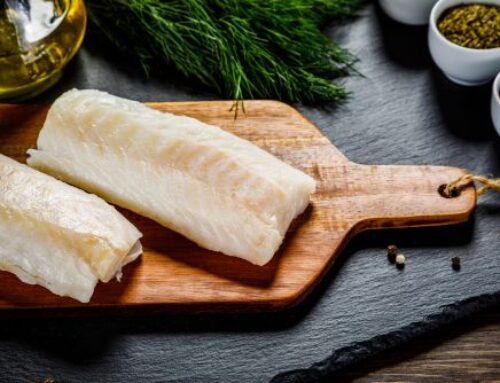The antibacterial action of essential oils may be their most studied effect, in part because these are simple experiments to perform. Place a piece of filter paper saturated with an essential oil in the center of a petri dish and watch the growth or lack of bacteria around the paper. The larger the area where bacteria does not grow, the stronger the action of that particular essential oil inhibiting that particular strain of microbe. French scientist Dr. Paul Belaiche popularized this test, known as an aromatogram. Through extensive research, Dr. Belaiche found which oil combinations would work best against many types of infection. Many studies have shown that carvacrol, the primary molecule found in oil of oregano, has exceptionally strong antimicrobial activity. It turns out that nature has been doing a remarkable job of therapeutic blending. For example, tea tree in the forest of Tasmania defends itself against an army of various microorganisms. Oregano in the rolling hills of Tunisia is also growing in an unforgiving environment, with its own indigenous microbes. Oregano and thyme may be the best solution for a case of stubborn nail fungus, yet these oils are far too strong alone or for use on soft tissue of any kind except in diluted blends.
Formulas and methods of application
Tea Tree is known for its protective properties against infections, and may be hands-down the most used antiseptic essential oil. It helps with general skin infections, and will speed up the healing process. The antifungal properties of this oil work wonders to fight athlete’s foot and nail fungus. It is well documented that tea tree leaves have been used for centuries to heal wounds and with ten times the antiseptic power of phenol (a benchmark chemical used in studying antimicrobial action).
Lavender often called the “medicine chest in a bottle” is the most versatile oil in use today;
a known antiseptic, and antilytic, lavender is helpful when used on scrapes and wounds because of its antiseptic properties. Lavender disperses heat and inflammation and brings relief from pain, spasms, and general unrest.
Eucalyptus is called “Nature’s Cure-All.” The tall, water-loving eucalyptus tree is one of the most useful trees in the world. Native to Australia, it is regarded as a ‘cure-all’ by indigenous Aborigines and it is also used in malaria-infested areas to purify the soil and air. In the early 1850s, the German botanist and explorer, Baron Ferdinand von Muller, suggested that the fragrance of the trees might prove antiseptic. Then in 1855, the French government sent seeds to Algeria to grow eucalyptus and consequently many disease-ridden areas were converted to healthy dry ones. Tip: Want to purify the air you breathe? Eucalyptus oil purifies your environment. In a diffuser it will kill germs in the air and reduce the number of airborne bacteria.
Geranium with a softer aroma and gentle effect on skin, is the choice for frequent use.
An antiseptic, astringent, and general tonic, geranium is traditionally indicated as a remedy
for skin issues such as acne, dermatitis and most skin conditions. Geranium is one of the few oils that has been used successfully against the Methicillin-resistant Staphylococcus aureus (MRSA) bacteria in laboratory studies.
Lemon is a powerful antiseptic and bactericide that performs many tasks around the house, as well as for general health. Try adding 1 drop of lemon to your daily moisturizer as it contains antiseptic properties that help in treating acne and problem skin. It also works as an astringent that helps cleanse the skin and reduce excessive oil. It should be noted that many dermatologists use lemon because of its healthy acids. In the home use this antiviral blend to clean counter tops, windows, and door handles: 2 drops each of lemon, pine, and eucalyptus radiata – add essential oils in a 4 ounce spray bottle, filled with distilled or spring water. Keep this solution handy for your day-to-day cleaning.
This is a sampling of just a few antiseptic essential oils. If you are new to the field, dive in with some of the suggestions here and you’re sure to enjoy the smell and the antiseptic power.
Recipe
Disinfectant Room Spray
6 drops eucalyptus
2 drops peppermint
4 drops tea tree
4 drops lemon
2 ounces water
Combine water and essential oils in a spray bottle. Studies show that a two-percent dilution of eucalyptus oil kills 70 percent of airborne staph bacteria. Shake well. Spray around the home to keep air clean and fresh.
Safety
- Do not take any essential oils internally.
- Do not use essential oils undiluted on skin.
- Test diluted essential oils on skin area before general use.
- Use photosensitizing essential oils cautiously. (i.e. lemon, lime, grapefruit).
Consult with a health practitioner before use if pregnant, nursing or suffering from any - medical condition, or taking medication.
- Keep essential oils out of reach of children
- Do not use essential oils internally.
- Less is more – don’t overuse essential oils.
References (3)
– Aromatherapy Thymes, Introducing Tea Tree, Spring 2016
– Mojay G. Aromatherapy for Healing the Spirit, Henry Holt and Company Inc.,
England, (1996).
– Schnaubelt K. Advanced Aromatherapy, The Science of Essential Oil Therapy,
Healing Arts Press, USA, (1998).
Aromatherapy Thymes magazine at barnesandnoble.com
http://instagram.com/aromatherapythymes





Leave A Comment